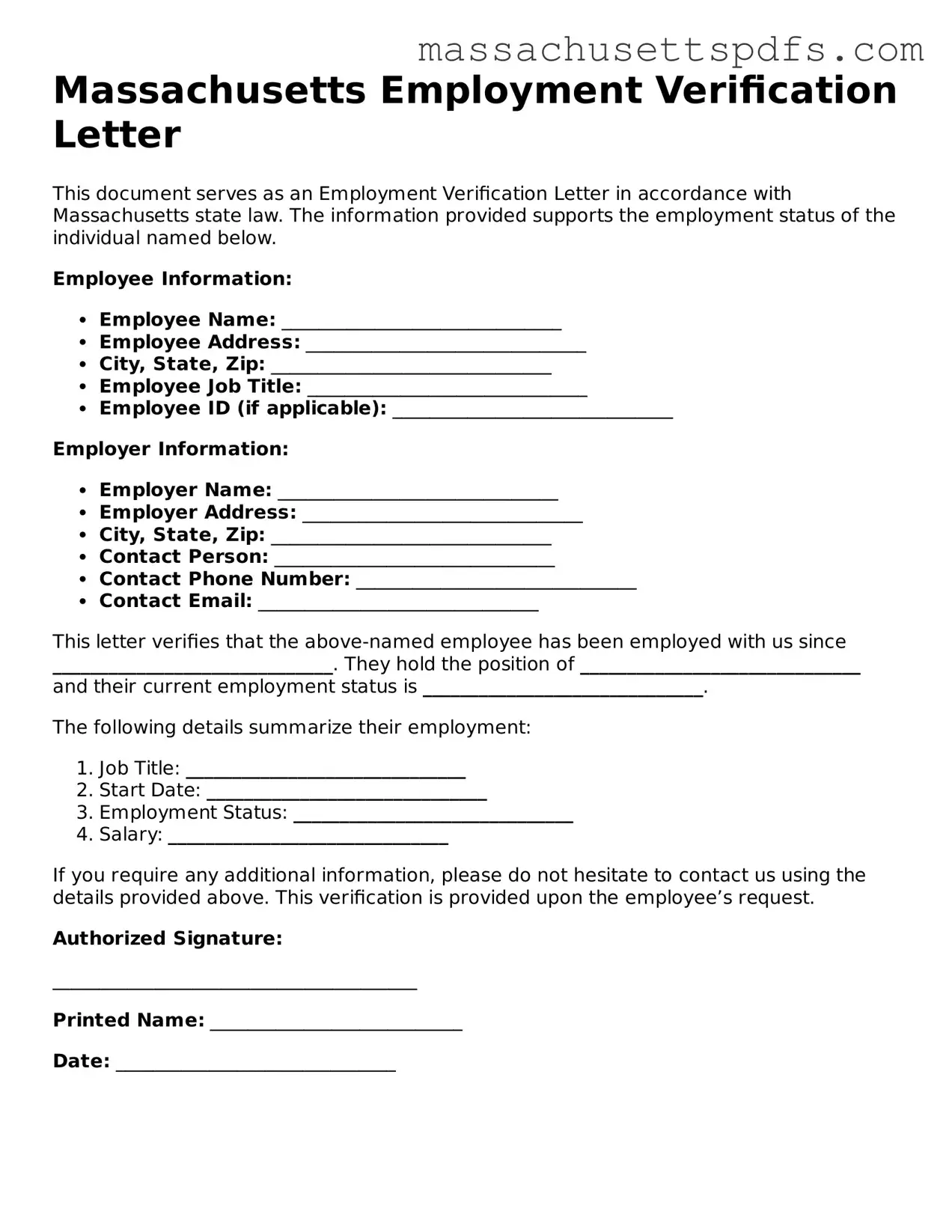Attorney-Approved Massachusetts Employment Verification Document
The Massachusetts Employment Verification form is a document used by employers to confirm the employment status of an individual. This form helps ensure that employees meet eligibility requirements for various benefits and services. For a smooth process, fill out the form by clicking the button below.
Launch Editor Here
